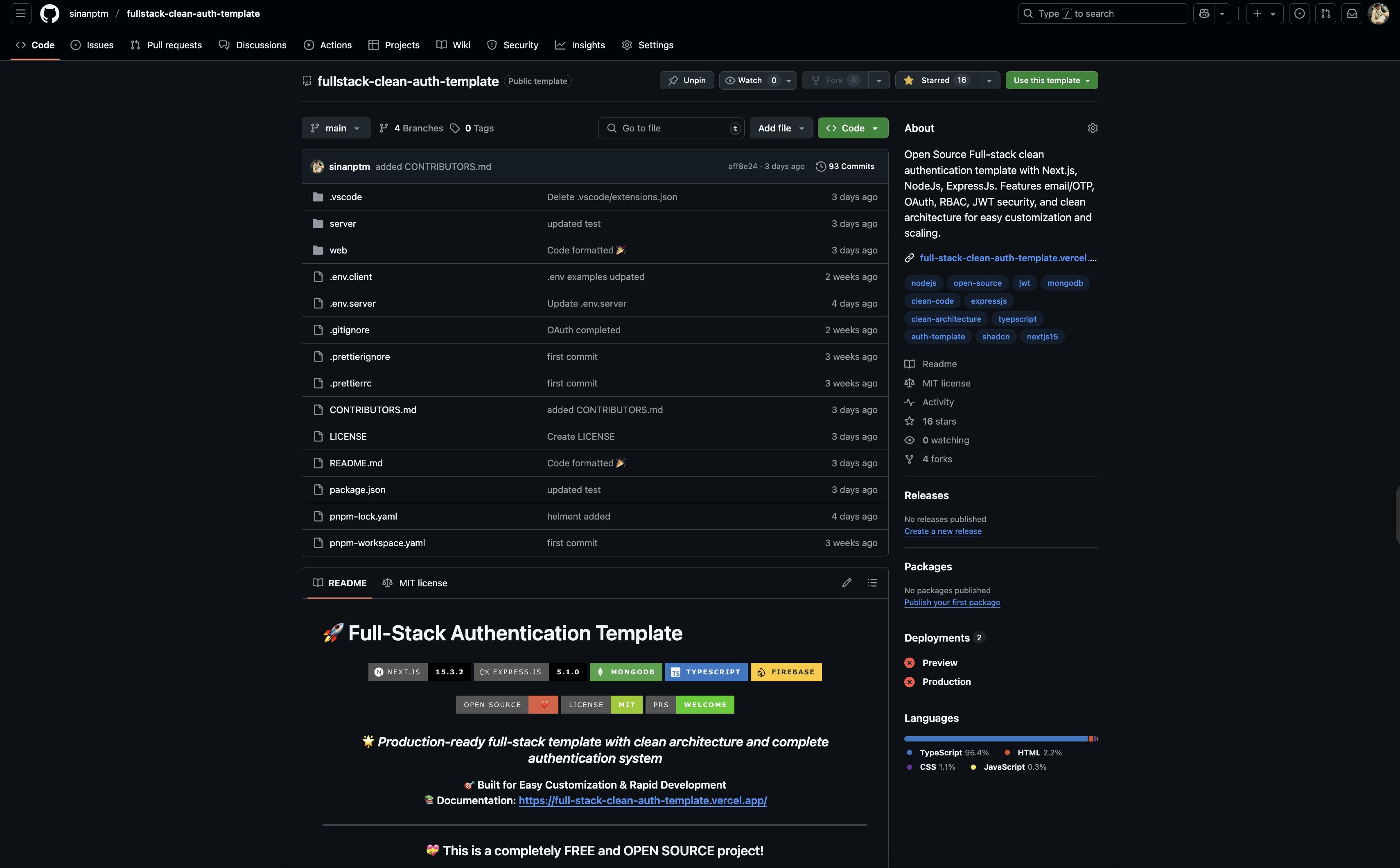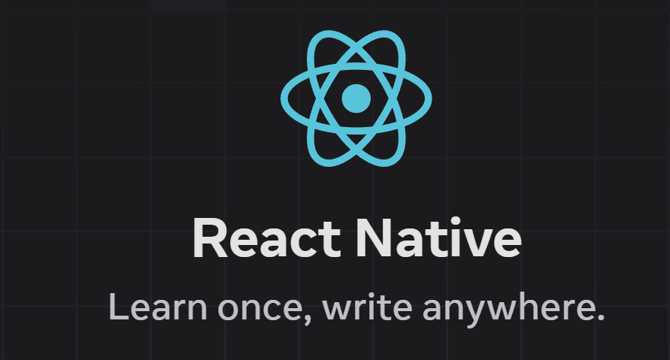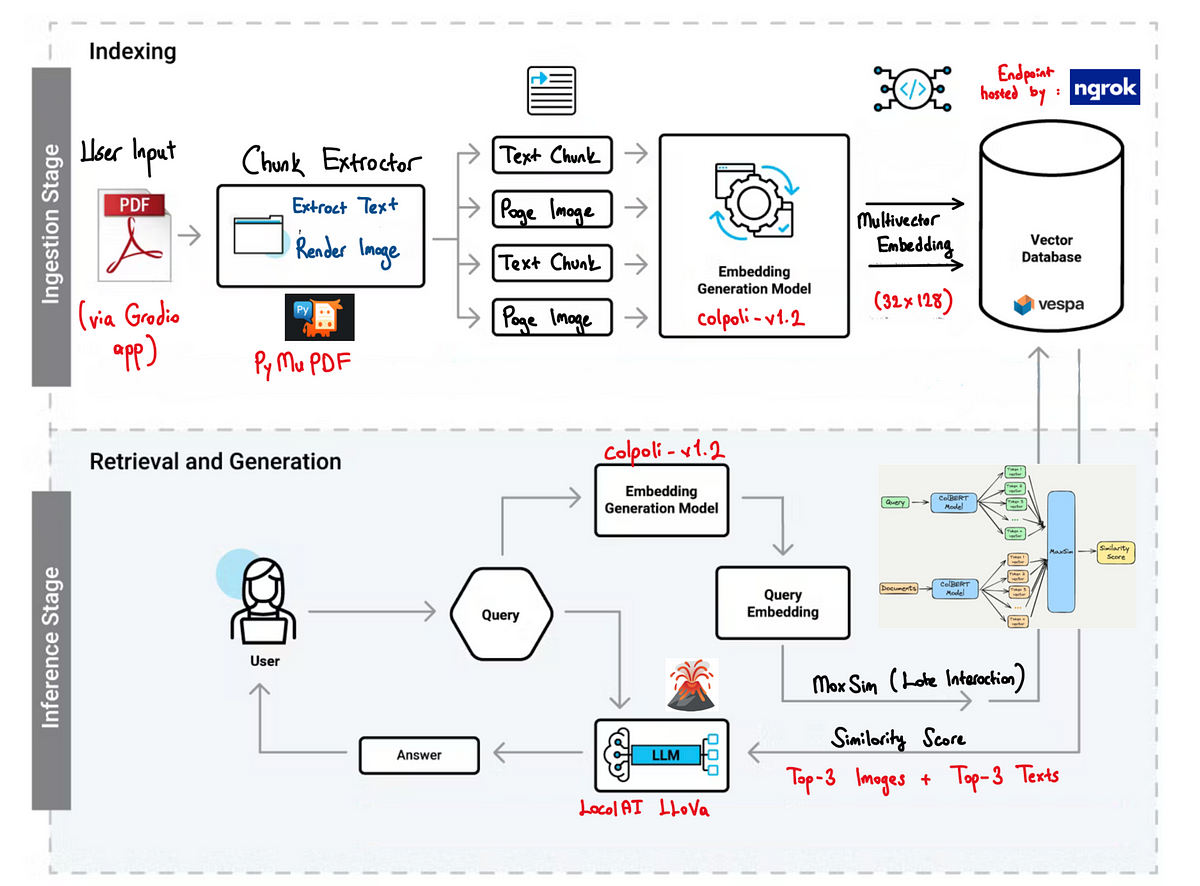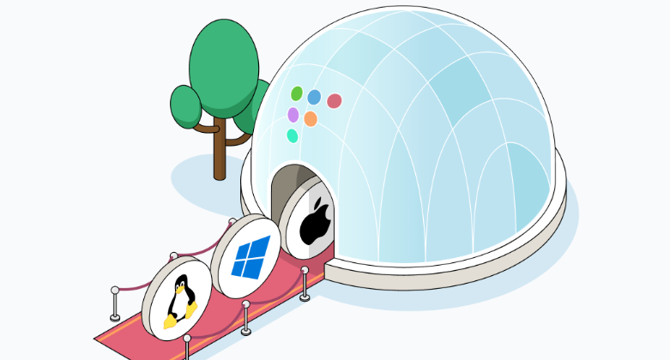Open Source News
Medium
320

Image Credit: Medium
Contributing to Open Source is Easier Than You Think: My Journey with Firebase Genkit
- Contributing to open source empowers individuals to shape the tools they use daily.
- Starting with labeled issues is crucial for newcomers interested in contributing.
- Downloading the project, installing dependencies, and running tests are standard procedures.
- Clear documentation and supportive communities are vital for attracting contributors.
- Making it easy to contribute is essential for successful open source projects.
- Fixing bugs involves analyzing code, debugging, and experimenting with solutions.
- Preparing a pull request is a proposal to merge changes into the main codebase.
- The review process helps contributors learn from experienced developers.
- Engaging in a conversation and learning from others are key aspects of open source.
- Seeing your code merged into the project is a satisfying validation of your contribution.
- Open source offers a chance to expand skills, contribute meaningfully, and be part of a community.
Read Full Article
19 Likes
Medium
211

Image Credit: Medium
Making Shakespeare Understandable: Modernizing Movie Subtitles with AI
- Translating Shakespeare's plays into modern English has been done by various authors, educators, and playwrights in the past.
- However, existing tools focus on reading or performing, neglecting the need for modern subtitles in movies.
- A new AI tool aims to bridge this gap by modernizing Shakespeare's dialogue specifically for movie subtitles.
- The tool preserves the original subtitle structure and timing, ensuring accuracy and continuity.
- It targets .srt files directly, allowing easy integration with video players and other platforms.
- The process involves chunking subtitles, formatting lines, strict system prompting, and reconstructing the .srt blocks.
- The modernized subtitles maintain synchronization and enhance viewers' understanding without altering the original intent.
- This innovation enables viewers to appreciate Shakespeare's works without struggling with archaic language barriers.
Read Full Article
12 Likes
Medium
136

Image Credit: Medium
Decoding the Oracle Cloud-Health Attack: Did legacy gateways expose medical records for millions?
- The article explores the potential connection between the breach of Oracle Cloud login servers and the theft of Protected Health Information (PHI) from Oracle Health/Cerner, impacting millions of patient records.
- Credentials for subdomains related to 'cerner.com' were compromised, allowing access to sensitive patient information across healthcare providers.
- The report suggests a 'chain attack' scenario penetrating Oracle Cloud servers for breaching Oracle Health/Cerner servers, emphasizing the need for further investigation.
- Pre-Authentication Remote Code Execution (RCE) on Oracle Cloud login servers facilitated data exfiltration by threat actors.
- The breach highlights concerns about Oracle's legacy Fusion Middleware and the vulnerabilities it poses in cloud-native platforms.
- The incident signifies the critical importance of timely and transparent communication from organizations to address sophisticated cyber threats effectively.
- The potential shift to open source EHR systems like OpenEMR and Ottehr is recommended for enhanced security and interoperability in healthcare settings.
- Ottehr, a newly introduced open source EHR, is highlighted as a promising solution with scalability and modern technologies to support millions of patient visits.
- The article underscores the need for healthcare providers to consider migrating to modern cloud-native architectures to mitigate risks associated with legacy systems.
- The interconnectedness of Oracle's legacy systems and AI-driven cyber threats pose significant challenges, necessitating a shift towards more secure platforms.
- Overall, the incident serves as a wakeup call for improving cybersecurity measures within the healthcare industry and promoting open source solutions for enhanced data protection.
Read Full Article
8 Likes
Hackernoon
220

Image Credit: Hackernoon
Authentication Sucks—So This Developer Built a Better Starting Point
- The developer shares frustrations with authentication and architecture challenges encountered in building projects, prompting the idea to create a reusable solution.
- Authentication was consistently a roadblock due to complexities like OAuth, JWTs, and session handling, leading to time-consuming implementations and messy code.
- Architectural concerns for scalability and clean code were also prominent, highlighting the need for a template that could evolve and be easily extended by other developers.
- The Full-Stack Clean Auth Template project was introduced as an open-source solution using Next.js, Express, Node.js, and TypeScript, emphasizing clean architecture principles and modularity.
- Key features include a clean architectural separation, modularity, TypeScript support, scalability, and comprehensive documentation for quick adoption.
- The template aims to streamline authentication and architecture decisions for product launches, enabling developers to focus on core features with a reliable foundation.
- Open-source and community-driven, the project welcomes contributions and extensions to support additional frameworks such as React Native or Angular.
- The developer actively maintains the project and encourages feedback, PRs, and suggestions from contributors to enhance the template's functionality and adaptability.
- The template serves as a foundational tool to save time and simplify project setups, presenting a solution for developers weary of repetitive foundational work.
Read Full Article
13 Likes
Discover more
- Programming News
- Software News
- Web Design
- Devops News
- Databases
- Cloud News
- Product Management News
- Operating Systems News
- Agile Methodology News
- Computer Engineering
- Startup News
- Cryptocurrency News
- Technology News
- Blockchain News
- Data Science News
- AR News
- Apple News
- Cyber Security News
- Leadership News
- Gaming News
- Automobiles News
Medium
3.9k

Image Credit: Medium
Debugging React Native in 2025: A Software Engineer’s Survival Guide
- Debugging React Native in 2025: A Software Engineer’s Survival Guide.
- Software engineers often experience unique pain related to debugging, such as layout issues, state resets in production, and unresponsive buttons.
- The author, having worked on various tech stacks, highlights the challenges faced within React Native apps as particularly grueling and satisfying.
- The article is a reflection on tools that helped the author navigate debugging challenges in React Native apps.
- It emphasizes moving from guessing solutions to actually understanding and resolving issues, even those not reflected in logs.
Read Full Article
16 Likes
Medium
105

Image Credit: Medium
How I made a programming language at 14; The Story of Glowscript
- At 14 years old, the author created a programming language called Glowscript within a console named Tardigrade.
- The author, diagnosed with ASD at age 5, faced bullying but remained confident and focused on achieving greater things.
- Initially starting a project named gVars, the author integrated a built-in scripting language and created Tardigrade for data manipulation.
- Glowscript, a simple and intuitive scripting language, was developed by the author as part of the Tardigrade project.
- Glowscript is user-friendly with no indentation requirement, easy programming, and offers fun experimentation.
- The author's dream project would involve increasing productivity without a focus on unlimited power or money.
- The author advises readers to work hard and improve, mentioning their GitHub repository for further exploration.
Read Full Article
6 Likes
Medium
383

Image Credit: Medium
Reimagining Multimodal Retrieval with ColPali: A New Paradigm in RAG Pipelines
- ColPali is a new vision-language model that embeds and retrieves multimodal content in a shared latent space, offering a more advanced RAG pipeline design.
- Traditional retrieval systems often struggle with multimodal content, leading to noise and misalignment when incorporating images.
- ColPali is a dual-encoder model that embeds both text and image inputs into the same vector space, enabling modality-agnostic retrieval.
- The system uses MaxSim similarity for more accurate matching between queries and stored vectors, allowing for semantic relevance extraction regardless of modality.
- An interactive Gradio interface showcases the system, providing users with quick and relevant results from uploaded PDFs based on natural language queries.
- The approach reduces cognitive load by presenting users with instant, relevant information from both text and images in documents.
- LLaVA, a local vision-language model, is used to generate meaningful answers offline, ensuring responses are based strictly on retrieved evidence.
- By leveraging joint embedding space, multivector storage, and local generation, ColPali offers a modality-agnostic and privacy-respecting retrieval system.
- The article provides source code for the pipeline on GitHub for those interested in implementing similar multimodal retrieval solutions.
Read Full Article
23 Likes
Bitcoinmagazine
238

The Trolls Are Coming: Defending Bitcoin Mining from Patent Trolls
- Malikie Innovations Ltd., a patent troll, filed lawsuits against Bitcoin mining firms claiming infringement on ECC-related patents acquired from BlackBerry.
- The lawsuits seek damages and injunctions, potentially imposing licensing on core Bitcoin functions.
- Defensive strategies include invalidating patents, Inter Partes Review (IPR), declaratory judgments, and motions to dismiss under Alice's test.
- IPR is cost-effective and fast, with a high success rate at invalidating patents, offering a potent defense against trolls.
- Community responses involve crowdsourced prior art searches, Bitcoin Legal Defense Fund, and industry alliances like COPA.
- Malikie's success could lead to financial strain, further lawsuits, and necessitate future safeguards within the Bitcoin community.
- The fight aims to demonstrate Bitcoin's core technologies as products of public research and collaborative development.
- The article provides insights into legal defenses, industry support, and community efforts to combat patent trolls targeting Bitcoin mining.
- The clash between Malikie Innovations and Bitcoin miners underscores the ongoing battle between open innovation and legacy IP rights.
- Overall, the community's unity and proactive measures are crucial in protecting Bitcoin's technological advancements from patent trolls.
- The industry's response to trolls can not only safeguard current operations but also foster innovation and growth in the Bitcoin ecosystem.
Read Full Article
14 Likes
Hackernoon
370

Image Credit: Hackernoon
Supercharge Your ETL Pipeline with SeaTunnel’s Lock-Free CDC
- Change Data Capture (CDC) tracks row-level changes and synchronizes data downstream in real-time.
- Apache SeaTunnel CDC supports Snapshot Reading and Incremental Tracking synchronization methods.
- SeaTunnel uses lock-free mechanisms for Snapshot Sync, splitting table data for parallel processing.
- Snapshot splits in SeaTunnel contain metadata for routing and processing.
- SeaTunnel's Incremental Synchronization captures real-time changes after the snapshot phase.
- SeaTunnel ensures exactly-once processing during both snapshot and incremental sync phases.
- During snapshot reading, SeaTunnel caches data and reconciles changes between low and high watermarks.
- Before incremental sync, SeaTunnel validates snapshot splits and corrects inter-split data.
- SeaTunnel employs the Chandy-Lamport algorithm for fault tolerance and checkpointing in distributed environments.
- Markers in SeaTunnel CDC allow all nodes to store their state for recovery and pause-resume capabilities.
Read Full Article
22 Likes
Arstechnica
8

Image Credit: Arstechnica
Scientists once hoarded pre-nuclear steel, and now we’re hoarding pre-AI content
- Former Cloudflare executive John Graham-Cumming has launched lowbackgroundsteel.ai, a website preserving pre-AI human-created content.
- The website aims to protect non-AI media from contamination by AI-generated content, similar to hoarding pre-nuclear steel during the Cold War.
- Generative AI models like ChatGPT have made it challenging to differentiate between human and AI-created content on the internet.
- The wordfreq project, tracking word frequency across languages, shut down due to the prevalence of AI-generated text online.
- Concerns exist about AI models training on their outputs, potentially leading to quality degradation known as 'model collapse.'
- Research suggests model collapse can be avoided by combining synthetic data with real data during training.
- Graham-Cumming aims to document human creativity from the pre-AI era through the website.
- The website points to major pre-AI content sources like Wikipedia dumps, Project Gutenberg, and GitHub's Arctic Code Vault.
- Lowbackgroundsteel.ai accepts submissions of pre-AI content sources to expand its archives.
- The project is a digital archaeology effort to distinguish between human-generated and hybrid human-AI cultures.
Read Full Article
Like
Siliconangle
106

Image Credit: Siliconangle
With $27M in funding, Fleet wants to bring more freedom to enterprise device management
- Fleet Inc. secures $27 million in Series B funding to enhance enterprise device management.
- The funding round was led by Ten Eleven Ventures with participation from CRV, Open Core Ventures, and other investors.
- Fleet offers an open-source device management platform for companies to secure their computing devices.
- The platform provides transparency, extensibility, and repeatability compared to proprietary software.
- Fleet aims to give organizations control over device management for compliance with regulations like PCI and FedRAMP.
- It offers both hosted and on-premises deployment options.
- Netflix, Stripe, Fastly, Uber, and Reddit are among the well-known enterprises using Fleet.
- Fleet's platform supports various devices like iPhones, Android phones, laptops, and even data centers.
- Customers praise Fleet for providing flexibility and avoiding forced cloud migrations.
- The company's rapid growth is attributed to its channel partners and open-source approach.
- Fleet CEO emphasizes the company's dedication to open hosting options.
- Ten Eleven Ventures Partner endorses Fleet for its comprehensive device management capabilities.
- Fleet plans to maintain its open approach and customizable hosting solutions.
- The company has been seeing significant adoption for its device management platform.
- Flexible hosting options are generating increased interest in web searches.
- Fleet's platform is designed to cater to a wide range of operating systems and devices.
- The company's mission is to provide free, relevant, and in-depth content to the community.
Read Full Article
6 Likes
VentureBeat
433

Image Credit: VentureBeat
Qodo teams up with Google Cloud, to provide devs with FREE AI code review tools directly within platform
- Qodo, an AI coding startup from Israel, collaborates with Google Cloud to enhance AI-generated software integrity.
- The need for oversight and quality assurance tools for AI-produced code is increasing.
- Qodo focuses on code quality and holistic engineering support, developing tools like Qodo-Embed-1-1.5B.
- Qodo's AI agents, like Qodo Cover, help with tasks such as test generation and code review.
- Qodo Merge, an AI-powered code review tool using Google's Gemini models, is offered at no cost to open-source software maintainers.
- Qodo's suite of tools is now integrated with Google Cloud, available through Vertex AI and Google Cloud Marketplace.
- QodoGen, Qodo's AI code assistant, delivers more accurate code suggestions with Gemini 2.5 Pro model.
- Qodo offers modular solutions for enterprise users, allowing customization of workflows.
- The startup program with Google Cloud provides a 50% discount for early-stage companies using Qodo's tools for commercial products.
- Qodo aims to bridge the gap between speed and quality in software development in the era of AI-driven coding.
Read Full Article
26 Likes
IEEE Spectrum
56

Image Credit: IEEE Spectrum
Airbnb’s Dying Software Gets a Second Life
- Vikram Koka discovered a stagnant Apache Airflow project in late 2019, sparking his journey to revitalize the software initially developed by Airbnb for data-related workflows.
- Airflow transitioned to a Top-Level Project at Apache Software Foundation, but faced stagnation with flat downloads and lack of updates.
- Koka was attracted to Airflow's 'configuration as code' principle and its ability to manage tasks through directed acyclic graphs coded in Python.
- After a year of efforts, Airflow 2.0 was released, marking a pivotal moment for the project's growth and adoption by enterprises.
- Airflow 3.0 introduced a modular architecture and enhanced features, leading to a significant increase in downloads and community engagement.
- The project now has over 3,000 global developers contributing, with an average of 35 to 40 million downloads monthly.
- Future plans for Airflow include supporting tasks in various programming languages and enhancing capabilities for AI and machine learning workflows.
- The team strives to nurture a diverse community of contributors and users, emphasizing gradual involvement and constructive feedback.
- Airflow's role in machine learning operations and generative AI is on the rise, positioning it as a critical foundation for AI and ML workloads.
Read Full Article
3 Likes
VentureBeat
433

MiniMax-M1 is a new open source model with 1 MILLION TOKEN context and new, hyper efficient reinforcement learning
- Chinese AI startup MiniMax has launched MiniMax-M1, a large language model with 1 million input tokens and open-source under Apache 2.0 license.
- MiniMax-M1 sets new standards in long-context reasoning, agentic tool use, and efficient compute performance.
- It distinguishes itself with a context window of 1 million input tokens, outperforming models like OpenAI's GPT-4o.
- MiniMax-M1 is trained using a highly efficient reinforcement learning technique, consuming only 25% of the FLOPs required by other models like DeepSeek R1.
- The model has two variants, MiniMax-M1-40k and MiniMax-M1-80k, with different output lengths.
- MiniMax-M1's training cost was $534,700, which is significantly lower compared to other models like DeepSeek R1 and OpenAI's GPT-4.
- It achieves high accuracy on mathematics benchmarks and excels in coding and long-context tasks, outperforming competitors on complex tasks.
- MiniMax-M1 addresses challenges for technical professionals by offering long-context capabilities, compute efficiency, and open access under Apache 2.0 license.
- The model supports structured function calling, packaged with a chatbot API, and provides deployment options using Transformers library.
- MiniMax-M1 presents a flexible option for organizations to experiment with advanced AI capabilities while managing costs and avoiding proprietary constraints.
Read Full Article
26 Likes
VentureBeat
101

Image Credit: VentureBeat
Groq just made Hugging Face way faster — and it’s coming for AWS and Google
- Groq is challenging cloud providers like AWS and Google by supporting Alibaba’s Qwen3 32B model with a full 131,000-token context window and becoming an inference provider on Hugging Face.
- Their unique architecture allows efficient handling of large context windows, offering speeds of approximately 535 tokens per second and pricing at $0.29 per million input tokens and $0.59 per million output tokens.
- The integration with Hugging Face opens Groq to a vast developer ecosystem, providing streamlined billing and access to popular models.
- Groq's global footprint currently serves over 20M tokens per second and plans further international expansion.
- Competitors like AWS Bedrock and Google Vertex AI leverage massive cloud infrastructure, but Groq remains confident in its differentiated approach.
- Groq's competitive pricing aims to meet the growing demand for inference compute, despite concerns about long-term profitability.
- The global AI inference chip market is projected to reach $154.9 billion by 2030, driven by increasing AI application deployment.
- Groq's move offers both opportunity and risk for enterprise decision-makers, with potential cost reduction and performance benefits paired with supply chain risks.
- Their technical capability to handle full context windows could be valuable for enterprise applications requiring in-depth analysis and reasoning tasks.
- Groq's strategy combines specialized hardware and aggressive pricing to compete with tech giants, focusing on scalability and performance advantages.
- The success of Groq's approach hinges on maintaining performance while scaling globally, posing a challenge for many infrastructure startups.
Read Full Article
6 Likes
For uninterrupted reading, download the app